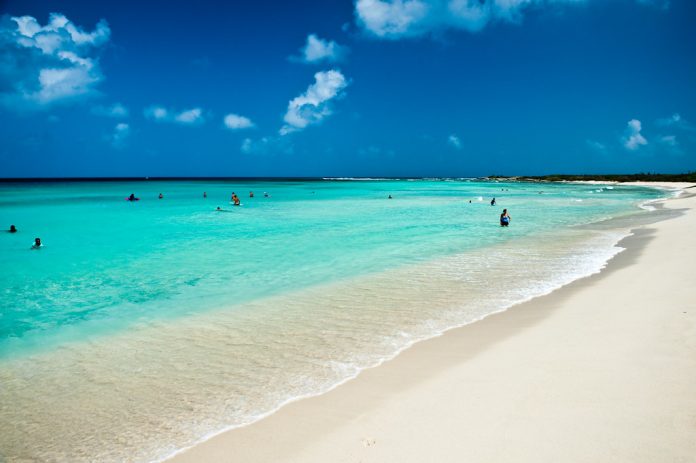(Oranjestad)—We’ve talked about the best beaches to visit on the island before, but have you ever wondered how Aruba got its white, sandy beaches, and why there’s a clear difference between the northern and southern shores? Here are some fun facts about the development of Aruban beaches.
How did Aruba get its white, sandy beaches?
Aruba’s beaches have developed over the span of thousands of years. Waves crashing on the rocky formations along our coast line (which consists mainly of coral reefs) have started to wear and tear the reefs over time, resulting in its gradual breakdown. Fish that feed off corals also contribute to this, one small bite at a time. Over the course of thousands of years, as waves continue to crash and fish continue to eat off the corals, sand starts to accumulate around the area. However, whether the sand stays there is another question to be answered, and this is where we highlight the biggest difference between the northern and southern coast of the island.
The sand that accumulates around a torn coral reef is swept away along with the debris by the ocean stream. However, in areas where it’s shallow and the stream is weaker, the sand tends to sick to the bottom faster. This is why the beaches in the south—the areas with weaker stream and shallower ocean floors—has sand that stretches for miles. In contrast, the northern area, where the stream is much stronger and the ocean floor is much deeper, there is no sand present—they were swept away with the current!
Why north deep, but south shallow?
Ah! Good question…and interesting phrasing.
Aruba is a continental island. The island actually forms part of South America, and the space between Aruba and the South American continent is simply referred to as land that runs under the ocean. This is why it gets gradually deeper in the south, whereas the ocean floor in the north runs steeply to the bottom.
Source: archival document provided by the National Archive of Aruba (ANA).
















